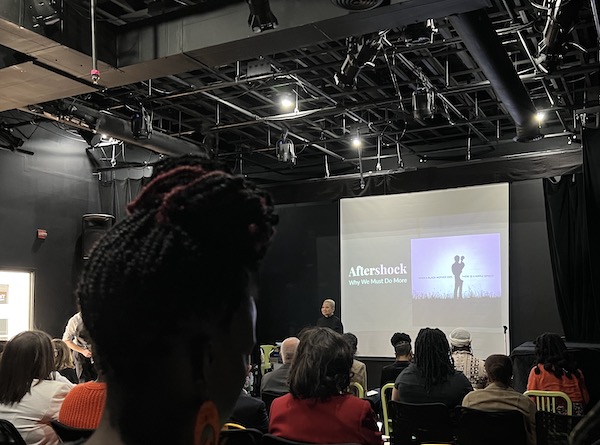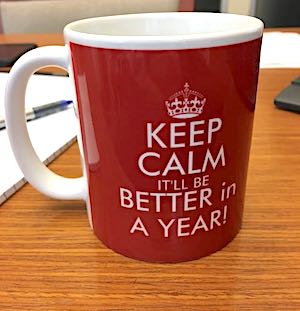Don’t hire me to make your employees better at enduring a terrible workplace
There’s a big trend right now to bring coaching to all employees.
Coaching used to be reserved for executives, senior managers, and “high potential” (HIPO if you’re into nerdy terms trying to sound cool) employees.
Even Bill Gates and Eric Schmidt have coaches.
Recently, though, companies have sprung up to bring coaching to all employees.
I think this is a positive trend, though it’s more complicated than those companies typically admit.
Does everyone involved understand what coaching really is?
I’ve been hired by organizations to coach individual staff members. Before ever signing a contract, I make sure everyone has the same understanding of what to expect from our engagement.
There’s still a ton of confusion out there about what professional coaching is and how it can be used.
Coaching is a specific discipline among several different types of helper roles—therapists, consultants, teachers, facilitators, mentors, advisors, and more.
If you’re a manager having trouble with an employee’s performance, for example, coaching for that employee is probably not what you want. Coaching is not a substitute for honest, direct performance feedback. Coaching is not a disciplinary tool. Do your job as a manager and manage your people.
If you’re an entrepreneur trying to build your sales pipeline, it may be a business coach you’re looking for. More likely, you want a consultant with specific domain knowledge who has experience building that particular type of pipeline.
A coach doesn’t give you solutions. A coach doesn’t do your job for you. A coach, as Eric Schmidt points out, brings perspective.
“The one thing people are never good at is seeing themselves as others see them.”
Eric Schmidt
A really good coach will help you figure out if it’s actually a coach you want, or a mentor or a consultant or teacher or someone else.
Some managers have it completely backwards
During a panel discussion I attended today, one of the speakers said, “Let’s stop patting people on the back for resilience when they’re in a system that’s designed to crush them.”
“Let’s stop patting people on the back for resilience when they’re in a system that’s designed to crush them.”
Shawnee Benton Gibson
Although the context for this statement was injustice in the medical system (see the film Aftershock), it’s a quote that is equally applicable to any workplace.

“A bad system beats a good person every time.” — Dr. Neel Shah
It perfectly describes a trap many managers and HR leaders fall into.
They see their employees getting burned out. They see quiet quitting. They have trouble retaining staff. Engagement is low.
So what do they do? The exact wrong thing: They hire coaches to help those employees feel better, learn to self-motivate, be more resilient to workplace problems.
Yes, this is even worse than pizza lunches or a ping pong table in the break room.
When you have a workplace that slowly crushes the enthusiasm out of your employees, giving them tools to prop themselves up in order to endure more crushing isn’t a sustainable solution. It’s not even a humane solution. Hell, it’s not even a solution.
Let’s stop patting people on the back for resilience when they’re in a system that’s designed to crush them. Let’s stop crushing them instead.

Let’s stop crushing people instead
Although removing toxicity from a workplace is actually everyone’s responsibility (don’t gossip, assume positive intent, eliminate miscommunication, de-armor yourself, etc.), it all starts with leadership.
If you’re the leader of a struggling team, contact me and let’s talk. I have over 30 years experience in managing and growing teams in different kinds of organizations, with 20 years in employee engagement. I’m pretty sure I can help you figure out what direction to go. And if I can’t, I bet I know someone great I can refer you to.
If you’re not a manager but you’re part of a team that is struggling, share this post with your manager.
(no, seriously)
Coaching is profoundly transformational if done the right way, for the right reasons, at the right time
Coaching for staff can be an incredible growth tool. People learn to see themselves as others see them. People connect with their core values and better understand their personal goals. People become more self-aware and learn how to show up in a more positive, productive, and collaborative manner in all areas of their life… including the workplace. You want your employees in this state of mind.
I’ve helped people become more effective in jobs they love. I’ve also helped people change careers or prepare for a next phase in their lives. These honest, personal and personalized conversations put people on the path that is right for them.
In my corporate engagements, my one-on-one coaching is all about the employee’s personal and professional goals, objectives, and growth. The company pays me, but the employee is my client.
When you hire a coach for one of your employees, you need to know that one possible result is that the employee might leave your organization.
If you’re not prepared for that possibility, then before you hire them a coach you need to do more work to figure out what you’re trying to accomplish and what type of help you need to get there. Do you look at your employees as people, or do you look at them as assets and liabilities to be managed?
A coach can help you with that.



0 Comments